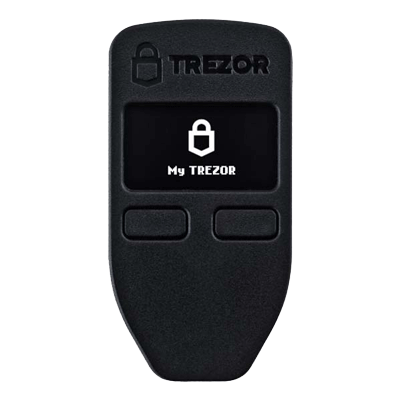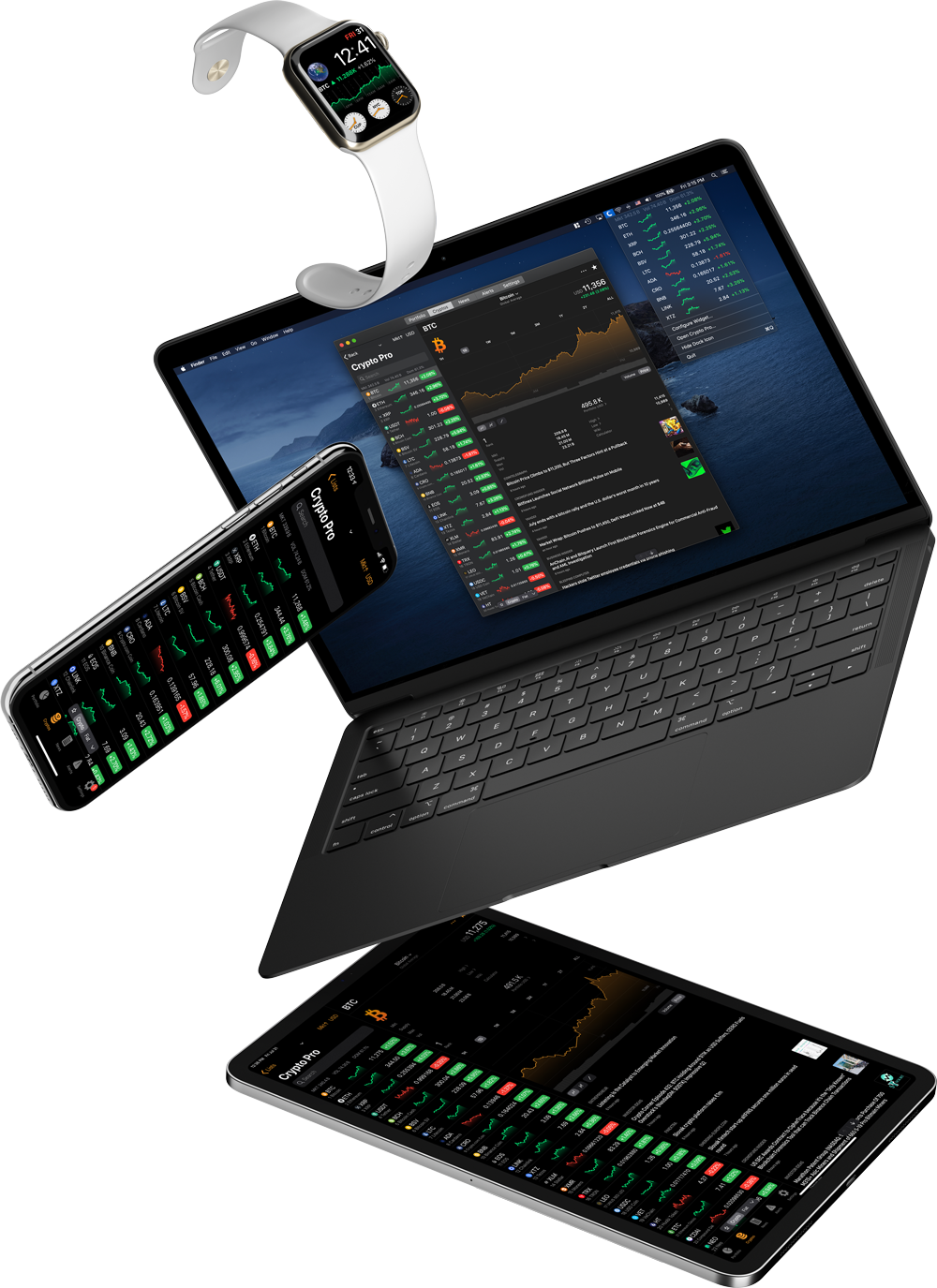A detailed comparison between Ledger and Trezor hardware wallets
2019 is a blockbuster year for cryptocurrencies — but not for the reasons you think. While Bitcoin (BTC) and other cryptos have surged out of the 2018 doldrums, investor excitement is fast being replaced with a shocking reality: theft.
“Cryptocurrency thefts, scams, and fraud could hit $4.3 billion in 2019” reads an August 2019 VentureBeat article. In Q1 2019 alone, criminals stole more than $356 million from exchanges, reports CipherTrace, noted cryptocurrency intelligence firm.
The swell of crypto-excitement has attracted thieves and crooks bent on relieving investors of their cryptos. How to put a stop once and for all to these digital Artful Dodgers?
Why Use a Hardware Wallet
Thieves appear notoriously good at hacking exchanges and metaphorically running off with the goods. Eight exchanges have been hacked in 2019, and we aren’t even finished with the year. Here are the highlights:
- July 2019: Japanese Exchange BITPoint — total of $32,000,000.
- May 2019: Heavyweight Exchange Binance — total of $40,000,000.
- March 2019: CoinBene Exchange — total of a staggering $100,000,000.
Moral of the story: Your cryptocurrencies are not really safe on exchanges. Statistically speaking, exchanges are the worst place to safeguard your crypto-assets.
Solution: Store your cryptocurrency on a hardware wallet right now.
What a Hardware Wallet?
A cryptocurrency hardware wallet is a physical device built to store the private keys of a given cryptocurrency. These devices are usually the size of a USB stick. Hardware wallets are purpose-built to store keys offline.
In a nutshell, hardware wallets securely store your private keys, which give you access to the cryptocurrencies you own that live on their respective blockchain.
Wallets come in two flavors: hot and cold. This article will focus on cold wallets; that is, a wallet that is not connected to the internet. A hot wallet is one that is connected to the internet. Hot and cold wallets both have advantages and disadvantages outside of the scope of this article. Head over to our article on cryptocurrency wallet types for a breakdown of the hardware wallet types and their pros and cons.
Pros and Cons of Hardware Wallets
Hardware wallets aren’t perfect. Let’s consider the pros and cons.
Pros:
- Store your cryptocurrencies offline
- Pin or passphrase protected
- Immune to malware and viruses (so far)
- Great for storing large amounts of crypto
- Recoverable even if you lose the device (via a recovery seed)
Cons:
- Usually expensive
- Less convenient for active trading
Trezor vs. Ledger Nano
Both Trezor (officially part of SatoshiLabs) and Ledger Nano are leaders in the hardware wallet space. Trezor was the first to offer a hardware wallet, called the Trezor One, released in 2013. Ledger Nano entered the hardware wallet space three years later in 2016 with the release of its Ledger Nano S.
Trezor and Ledger are both well-known and well-regarded hardware wallet makers. A key difference between the two is that Trezor devices are made mostly of plastic, while Ledger uses aluminum and stainless steel. Given the design, Trezor has larger screens than Ledger, a feature that may be important for some consumers.
Trezor and Ledger Nano continue to duke it out over mind- and market-share. In March of 2019, Ledger revealed security vulnerabilities in Trezor devices. Trezor hit back with a blog post detailing the relatively misguided nature of Ledger Nano’s claims. Undoubtedly the Trezor vs. Ledger duel will continue as the market matures.
Other hardware wallet makers continue to produce wallets, including KeepKey, Archos, CoolWallet, and Digital Bitbox.

Trezor Hardware Wallets
Prague-based Trezor was the first to offer a hardware wallet, and at the time of writing offers two wallets. Trezor manufactures its wallets in the Czech Republic and is 100% open source.
Trezor One

The Trezor One debuted in 2014 to much fanfare and excitement. It was the first hardware wallet for consumers. This is a tried-and-true hardware wallet that sells at a fair price. For consumers looking for a standard hardware wallet, the original Trezor One won’t disappoint.
Features:
- Size: 2.4in x 1.2in x 0.2in
- Screen Size: OLED, 128 × 64 pixels
- Native Support: 14 cryptocurrencies
- Total Support: 1000+ cryptocurrencies
- External Wallet Support: Many
- Asset Recovery: 12-word to 24-word sentence restores account
- Color: Black or white
- OS Compatibility: PC, Mac, Linux, and Android
- Security: PIN code, passphrase, recovery sentence
- Other: Password manager; FIDO/U2F compatible
- Certification: None
Retail price (2019): $55
Trezor Model T

The Trezor Model T is a second-generation hardware wallet released in 2018. It builds upon the Trezor One’s strengths and is fully open source. This hardware wallet has dispensed with the OLED screen and buttons in favor of an LCD touchscreen. The Trezor Model T also includes a MicroSD slot, uncommon for hardware wallets.
Features:
- Size: 2.52in x 1.54in x 0.39in
- Screen Size: Full-color LCD touchscreen, 240 x 240 pixels
- Native Support: 50+ cryptocurrencies
- Total Support: 1000+ cryptocurrencies
- External Wallet Support: Many
- Asset Recovery: 12-word to 24-word sentence restores account
- Color: Black
- OS Compatibility: PC, Mac, Linux, and Android
- Security: PIN code, passphrase, recovery sentence
- Other: Can function as both a cold and hot wallet; functionality for GPG encryption and U2F authentication
- Certification: None
Retail price (2019): $169

Ledger Nano Hardware Wallets
This French firm is another leader in hardware wallets, and also offers two popular wallets. As a hardware wallet leader, Ledger is concerned with security. To this end, the company has ensured that both hardware wallets meet specific security certifications, although products are not fully open source due to manufacturer limitations.
Ledger Nano S

The Ledger Nano S was released in 2016 and is considered one of the safest and cheapest hardware wallets. The Nano S is the only independently verified hardware wallet and has clocked in over 1.5 million-plus sales.
While lacking in storage size, this is a reliable, well-received hardware wallet at a reasonable price point.
Features:
- Size: USB-sized
- Screen Size: 128 x 32 pixels
- Asset Storage: 3 – 18 digital assets simultaneously
- Native Support: 22 cryptocurrencies
- Total Support: 1,100+ cryptocurrencies
- External Wallet Support: 55+ wallets
- Asset Recovery: 24-word sentence restores the account
- Color: Black, yellow, pink, green, blue, or transparent
- OS Compatibility: PC, Mac, Linux, and Android
- Security: PIN code, recovery sentence
- Certification: Certified Secure Element (CC EAL5+) + Independently certified by ANSSI
Retail price (2019): $59
Ledger Nano X

The Ledger Nano X is the newest hardware wallet, as it was released this year (2019). This wallet deviates from other competitors in that it focuses on mobility, specifically its Bluetooth accessibility and built-in battery. In addition, the Ledger Nano X (and Ledger in general) is well-known for its focus on certified security.
Features:
- Size: USB-sized
- Screen Size: 128 x 64 pixels
- Asset Storage: 100 digital assets simultaneously
- Native Support: 22 cryptocurrencies
- Total Support: 1,100+ cryptocurrencies
- External Wallet Support: 55+ wallets
- Asset Recovery: 24-word sentence restores the account
- Color: Black
- OS Compatibility: PC, Mac, Linux, Android, and iOS
- Security: PIN code, recovery sentence
- Other: Bluetooth enabled (encrypted)
- Certification: Certified Secure Element (CC EAL5+)
Retail price (2019): $119

Honorable Mentions
While Trezor, Ledger will work for most consumers, they may not be suitable for everyone. In addition to the top three, we will touch on Archos, CoolWallet, and Digital Bitbox. These hardware wallets have specific use-cases and may not be suitable for the average consumer.
KeepKey: A Top Wallet Contender

KeepKey hardware wallet was born in 2015, created by Seattle-based KeepKey. The company created a completely open-source hardware wallet that stands out with its large screen. The company grew but was acquired in August 2017 by Swiss crypto exchange ShapeShift. The KeepKey wallet stands out as having a high degree of craftsmanship and a good feel. Unfortunately, it is a clear third place as it doesn’t support near the number of coins of Trezor or Ledger.
Features:
- Size: Almost twice as large as either the Trezor or Ledger (1.49 x 3.68 x 0.48 inches)
- Screen Size: 256 x 64 3.12” (large) OLED display
- Asset Support: 40 digital assets
- Native Support: 8 cryptocurrencies
- Asset Recovery: 12-word sentence restores account
- Color: Black
- OS Compatibility: PC, Mac, Linux, and Android
- Security: PIN code, recovery sentence, passphrase
- Other: Built-in exchange via ShapeShift integration; open source
- Certification: None
Archos Safe-T Mini

Archos is a French firm that makes a variety of technology products, from smartphones to portable media players — and now a hardware wallet. The Safe-T mini is small, circular hardware wallet that can fit in the palm of your hand. It has an LCD where you can confirm transactions with an up-to-six-digit PIN code.
- Supported Coins: Bitcoin (BTC), Bitcoin Cash (BCH), Bitcoin Gold (BTG), Litecoin (LTC), Dash (DSH), Ether (ETH), Ether Classic (ETC), ERC-20 Tokens, Groestlcoin (GRS), Monacoin (MONA), le Fujicoin (FJC), and Bitcore (BTX).
- Supported Software: Electrum (Bitcoin, Bitcoin Cash, Bitcoin Gold, Litecoin, Dash), MyCrypto (Ether, Ether Classic, ERC-20 Tokens)
Retail price (2019): $55
CoolWallet S

CoolBitX, maker of the CoolWallet was founded in 2014. The company crowdfunded the CoolWallet on Indiegogo in 2015, with a successful launch of the wallet in 2018. The wallet has an unusual design compared to many in the market, often referred to as “credit card like” and has the exact design specifications of a credit card. The wallet scores high on portability and design and can be used as an every-day wallet with its Bluetooth functionality.
- Supported Coins: Bitcoin (BTC), Bitcoin Cash (BCH), Litecoin (LTC), Ether (ETH), Ripple (XRP), Horizen (ZEN), ICON (ICX), Tether (USDT), Binance (BNB), and ERC-20 Tokens
Retail price (2019): $99
BitBox 01

The BitBox 01, formerly Digital BitBox (and upcoming BitBox 02) was created by Shift Crypto security AG, a spinoff of ETH Zürich national university. This is perhaps the smallest hardware wallet on the market, about three times the size of a MicroSD chip. Speaking of the microSD, the device houses one that creates a backup for easy restoring. It also includes a touch LED for confirming important actions.
- Supported Coins: Bitcoin (BTC), Litecoin (LTC), Ether (ETH), Ether Classic (ETC), and ERC-20 Tokens
Retail price (2019): $49








